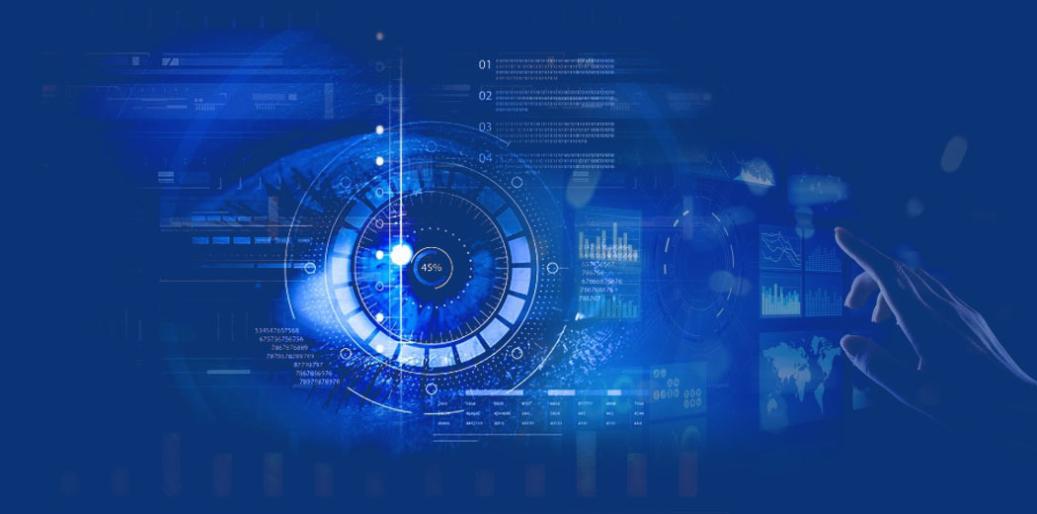Computer Vision AI: A Revolutionary Force in Space Exploration
The vast expanse of space holds countless mysteries and opportunities for scientific exploration. As we venture further into this uncharted territory, computer vision AI (artificial intelligence) emerges as a transformative technology poised to revolutionize space exploration and redefine our understanding of the universe.

Defining Computer Vision AI And Its Significance In Space Exploration
Computer vision AI encompasses the ability of machines to interpret and understand visual information, mimicking the human visual system. This technology has profound implications for space exploration, enabling spacecraft to "see" and comprehend their surroundings, leading to safer navigation, more efficient operations, and groundbreaking scientific discoveries.
The unique challenges and opportunities of using computer vision AI in space exploration lie in the extreme conditions and vast distances involved. Spacecraft must operate autonomously in harsh environments, often with limited communication and resources. Computer vision AI offers the potential to overcome these challenges, unlocking new frontiers of exploration and scientific inquiry.
Applications Of Computer Vision AI In Space Exploration
Navigation and Guidance
- Autonomous spacecraft navigation using computer vision-based guidance systems ensures precise and efficient trajectories, reducing the need for human intervention.
- Obstacle detection and avoidance during space travel minimizes the risk of collisions with celestial objects, enhancing mission safety.
- Precise spacecraft landing on extraterrestrial surfaces, such as Mars or the Moon, is made possible through computer vision AI-guided descent and landing systems.
Planetary Exploration
- Surface mapping and terrain analysis using computer vision AI provide detailed insights into the geological features and composition of other planets, moons, and asteroids.
- Identification of geological features and resources, such as water ice or mineral deposits, aids in the search for potential habitable environments and valuable resources.
- Detection of life forms or biosignatures on extraterrestrial bodies, a long-standing goal of astrobiology, is made possible through computer vision AI-powered analysis of images and data.
Spacecraft Maintenance and Repair
- Visual inspection of spacecraft components for damage or anomalies ensures timely detection of potential issues, preventing catastrophic failures.
- Autonomous repair tasks using computer vision-guided robotic systems reduce the need for human intervention in space, minimizing risk and cost.
- Real-time monitoring of spacecraft systems for preventive maintenance optimizes performance and extends the lifespan of critical components.
Scientific Research and Data Analysis
- Analysis of images and data collected from space telescopes and probes provides valuable insights into the composition, structure, and evolution of celestial objects.
- Identification of celestial objects, galaxies, and cosmic phenomena, such as black holes or supernovae, expands our understanding of the universe.
- Classification and characterization of stars, planets, and exoplanets aid in the search for habitable worlds and the study of planetary systems.
Space Robotics
- Control and coordination of robotic arms and manipulators in space enable intricate tasks such as sample collection, satellite servicing, and construction.
- Visual navigation and obstacle avoidance for space robots ensure safe and efficient operation in complex and unstructured environments.
- Object recognition and manipulation tasks in extraterrestrial environments, such as collecting rock samples or assembling structures, are made possible through computer vision AI.
Benefits And Advantages Of Using Computer Vision AI In Space Exploration
Increased Autonomy and Efficiency
- Automation of repetitive and hazardous tasks, such as spacecraft navigation and maintenance, reduces the need for human intervention, minimizing risk and cost.
- Improved efficiency and productivity in space exploration missions, enabling more ambitious and groundbreaking endeavors.
Enhanced Safety and Reliability
- Computer vision AI can detect potential hazards and risks in space, such as space debris or micrometeoroids, ensuring safer operations.
- Increased reliability of spacecraft systems through real-time monitoring and anomaly detection, preventing catastrophic failures and extending mission lifespans.
Scientific Discoveries and Exploration
- Computer vision AI enables the exploration of remote and inaccessible regions of space, such as the outer planets or distant galaxies, expanding our knowledge of the universe.
- Identification of new celestial objects, geological features, and potential life forms deepens our understanding of the cosmos and our place in it.
- Advancement of scientific knowledge and understanding of the universe through the analysis of vast amounts of data collected by space telescopes and probes.
Challenges And Limitations Of Using Computer Vision AI In Space Exploration
Data Transmission and Communication Delays
- The vast distances in space can cause significant delays in data transmission between spacecraft and Earth, affecting real-time decision-making and control.
- Challenges in developing computer vision AI algorithms that can operate effectively with limited and delayed data.
Harsh and Extreme Environments
- Space exploration involves extreme temperatures, radiation, and microgravity conditions, posing challenges to the robustness and reliability of computer vision AI systems.
- Ensuring the performance and accuracy of computer vision AI algorithms in these harsh environments is crucial for mission success.
Limited Resources and Power Constraints
- Spacecraft have limited power and computational resources, requiring optimization of computer vision AI algorithms for low-power and resource-constrained environments.
- Developing efficient and lightweight computer vision AI models that can operate effectively within these constraints is essential.
Conclusion: A New Era Of Space Exploration And Discovery
Computer vision AI stands poised to revolutionize space exploration, enabling autonomous navigation, enhanced safety, groundbreaking scientific discoveries, and the exploration of remote and inaccessible regions of the universe. As research and developments in this field continue to advance, we can anticipate even more transformative applications of computer vision AI in space exploration, leading to a new era of discovery and understanding of our vast and enigmatic cosmos.

YesNo

Leave a Reply